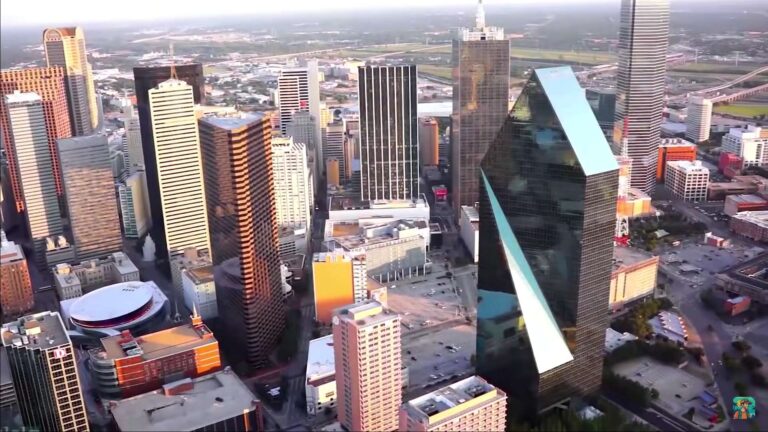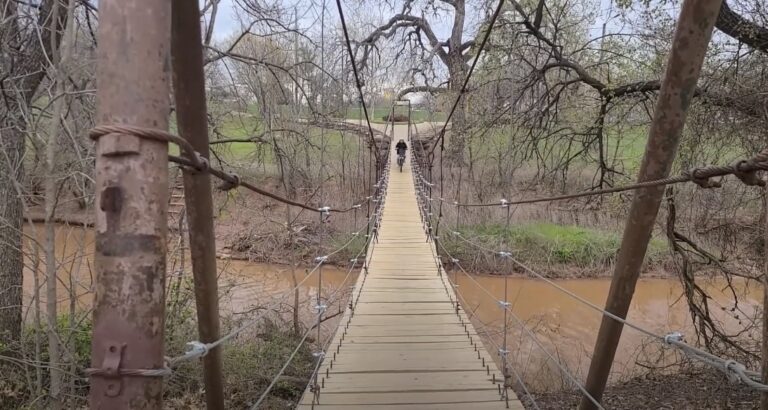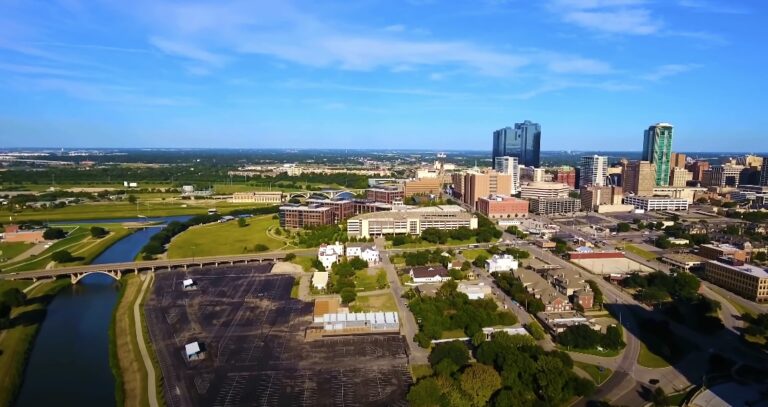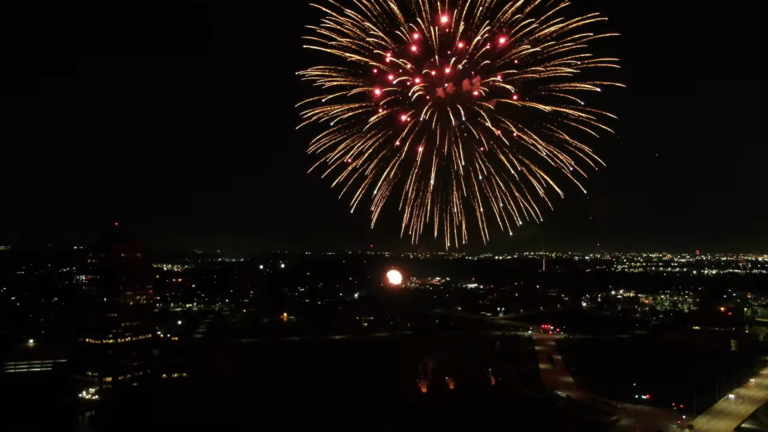Within the vast expanse of Texas, a state renowned for its size and diversity, numerous cities and towns beckon with their unique charm and offerings. While urban hubs like Houston, Dallas, and Austin entice with their bustling job markets and vibrant activities, smaller towns such as Fredericksburg, Wimberley, and San Marcos draw people in with their pastoral landscapes and quintessential small-town appeal.
- However, residing in Texas isn’t just about the allure of city lights or pastoral serenity; it’s also about the financial reality. Texas encompasses an array of locales, each with its distinct cost of living. Some of these are among the priciest in the nation.
- For instance, areas close to the technological heartbeat of Austin or the energy dynamos of Houston generally command higher living costs due to burgeoning demands and flourishing job markets. Conversely, regions further inland, blessed with vast stretches of farmland or historical significance, offer a more affordable lifestyle, albeit sometimes with fewer modern amenities.
Explore insightful strategies on initiating your own link building venture in this comprehensive guide on launching a successful SEO company
The Lone Star State’s allure is multifaceted, stemming not only from its diverse topography but also from the rich tapestry of cultures, cuisines, and histories that intertwine here. Each town and city paints a unique portrait of Texan life, blending the rustic with the contemporary, the tranquil with the dynamic. For potential settlers or visitors, it’s crucial to balance the magnetic appeal of these places with the tangible costs associated. In Texas, the promise of new adventures always looms large, but so does the imperative of financial prudence.
Most Expensive Places to Live in Texas
Fair Oaks Ranch
Nestled in the intersection of Bexar, Comal, and Kendall counties, a mere 29-minute drive north from downtown San Antonio via I-10 E, lies the upscale Fair Oaks Ranch. Known for its sprawling hills, captivating vistas, and opulent homes, properties in this city can vary dramatically in price, ranging from $474,200 to an astounding $5 million.
It’s not just the lavish real estate that attracts the well-heeled; the city’s top-tier educational institutions are also a draw. With schools that are generously funded and staffed by the crème de la crème of educators, Fair Oaks Ranch has become a prime destination for families prioritizing education. But what truly cements its status as an elite enclave? A mix of luxury shopping, gourmet dining options, elite private schools, and an undeniably low crime rate. It’s clear why Fair Oaks Ranch holds the title of the most coveted city in Texas.
College Station
The influx of students each year also triggers seasonal price hikes, especially during the start of semesters, as local businesses and housing facilities aim to capitalize on the increasing demand. Additionally, the city sees periodic surges in tourism, particularly during university events, sports tournaments, and graduation ceremonies. Such peaks in visitors result in short-term spikes in prices for accommodation, dining, and local services.
Local businesses, from cafes to bookstores, cater heavily to the student demographic, often reflecting university themes or offering student discounts. However, for permanent residents and non-students, the challenge lies in navigating the cost implications of living in a university-centric town. While College Station thrives on its youthful energy and academic prominence, it underscores the balance residents must strike between enjoying the vibrant atmosphere and managing their finances effectively.
Bastrop
But beyond these economic figures, Bastrop exudes a rustic charm and a tight-knit community vibe. Historically rich, it holds its ground as a city with a vibrant past and a promising future. Its scenic beauty, marked by the Colorado River flowing gracefully along its edge, and the famed Lost Pines Forest make it a sought-after destination for nature enthusiasts. Moreover, its cultural events, local festivals, and artisan shops add a unique flavor, making it a treasured Texan gem. The city’s dedication to preserving its heritage, coupled with a growing entrepreneurial spirit, presents an intriguing blend of the past and the present. While the rising living expenses are undeniable, many of Bastrop’s residents firmly believe that the quality of life, community spirit, and the city’s intrinsic charm provide unparalleled value that goes beyond mere numbers.
Prairie View
Additionally, Prairie View is home to Prairie View A&M University, which, like other college towns, leads to a unique blend of economic factors. The influx of students each year and the university’s events can cause seasonal variations in prices for accommodations, dining, and local services.
With a mix of students, professionals, and families, Prairie View showcases a dynamic community. The presence of the university offers cultural and educational experiences, but it also presents challenges as local businesses try to cater to a diverse demographic. Dining and entertainment options in the city are tailored to accommodate a wide range of preferences, but they often come with a premium price tag.
For those considering Prairie View as a potential residence, it’s crucial to weigh the cultural and professional benefits against the heightened costs of living, ensuring a balanced lifestyle that matches individual or family needs.

Marble Falls
Recent data suggests that Marble Falls ranks among the pricier cities to reside in within Texas. For a one-bedroom apartment, the rent fluctuates between $530 and $1,764, with the average house price surpassing $380,146. Several factors account for Marble Falls’ elevated living costs. The town nestles amidst captivating landscapes, offering an array of outdoor pursuits. This factor alone hikes property values. Furthermore, the city boasts low crime statistics and top-notch educational institutions, further inflating the cost. The presence of high-wage industries and businesses also plays its part. Still, many argue that the charm and facilities of Marble Falls justify the price tag.
Addison
In the vast landscape of Texas, Addison stands out in the Dallas-Fort Worth metroplex as one of the state’s costliest cities to inhabit. The city’s living expenses considerably exceed the national benchmark, reflected in the median household earnings of over $75,235. Despite the existence of less expensive neighboring areas, a typical one-bedroom apartment in Addison fetches over $1,500 in rent. Its location in the rapidly expanding Dallas-Fort Worth region, coupled with a robust economy and a scant unemployment rate, magnetizes both companies and families. The city’s renowned educational system and an extensive array of amenities – from dining to shopping – contribute to its high cost.
Fredericksburg
Fredericksburg carries the reputation of being among Texas’s pricier cities. With a living cost index of 101.1, it surpasses the state’s average of 93.9 considerably. The median house price hovers around $497,601, with average rents nearing $1,450. This town, in the picturesque Texas Hill Country, holds high real estate values due to its visual appeal and recreational offerings. Major establishments like the University of Texas at Austin and sizable healthcare entities have their bases here. Their presence elevates salary standards, and Fredericksburg’s closeness to urban hubs like San Antonio and Austin further amplifies living costs.
San Marcos
But it’s not just the numbers that tell the tale of San Marcos; it’s the lived experiences of its residents. Many are drawn to the city’s unique blend of urban vibrancy and natural beauty. The shores of its sprawling lake are often dotted with families and outdoor enthusiasts, taking in the serene environment. Cultural events, often hosted by institutions like Texas State University, infuse energy and diversity into the community. Furthermore, businesses, particularly in the retail and hospitality sectors, thrive due to the influx of both locals and tourists, all wanting a piece of what San Marcos offers. The city’s infrastructure, from public transport to educational facilities, is continually adapting to meet the demands of its growing population. While the elevated living costs can be a challenge, many residents believe that the quality of life, community spirit, and opportunities in San Marcos justify the expenses. The city serves as a microcosm of Texas’s larger narrative, where tradition melds with modernity, and natural beauty coexists with urban sophistication.
Bee Cave
Beyond its economic dynamics, Bee Cave has cultivated a reputation for being a harmonious blend of opulence and culture. The city is adorned with green spaces, offering residents a retreat from their bustling lives, allowing moments of introspection and leisure amidst nature. The local community, while affluent, holds tight to a sense of camaraderie, often congregating at city events, art shows, and local farmers’ markets. The influence of Austin’s cultural and entrepreneurial spirit is palpable in Bee Cave, with a myriad of boutique shops, artisan cafes, and tech startups setting their roots. The challenges of living in a rapidly evolving city like Bee Cave are evident, especially as the cost of living soars. Yet, for many residents, the blend of small-town charm, modern amenities, and a tight-knit community is an unparalleled experience, making the city a magnetic hub for those seeking both luxury and a sense of belonging.
Webster
Webster’s charm isn’t just in its economic potential or its close proximity to Houston; it’s in the rich tapestry of experiences it offers. The city is a unique fusion of modernity and tradition, where space-age industries rub shoulders with local boutiques and eateries. Its streets echo with stories of old, while its skyline hints at a future full of promise. Parks and recreational areas in Webster offer a respite from the daily grind, making it a preferred place for families looking for a balanced life. The community, vibrant and diverse, has a spirit of resilience and innovation. While the cost of living presents challenges, many residents find the blend of opportunity, community, and lifestyle in Webster worth the premium. This balance between the old and new, tradition and progress, makes Webster not just a place to live, but a place to thrive.

Conclusion
Texas, with its vast expanse and diverse landscapes, offers a myriad of living experiences, ranging from quaint towns to bustling urban hubs. While cities like Marble Falls, Addison, and San Marcos capture attention for their scenic beauty, strong economies, and cultural attractions, they also come with a heftier price tag for residents. On the other hand, places like Bee Cave and Webster, despite their smaller sizes, are reflective of the ripple effects of booming industries and their proximity to major city centers. The escalating living costs in these cities are a testament to their growing appeal, amenities, and strategic importance in the Texan landscape. However, these costs also pose challenges for residents, especially those from middle and lower income brackets. As Texas continues to grow and evolve, striking a balance between development, attraction, and affordability will be pivotal. Future residents must weigh the tangible and intangible benefits of these cities against their budgetary constraints, making choices that best suit their needs and aspirations.






